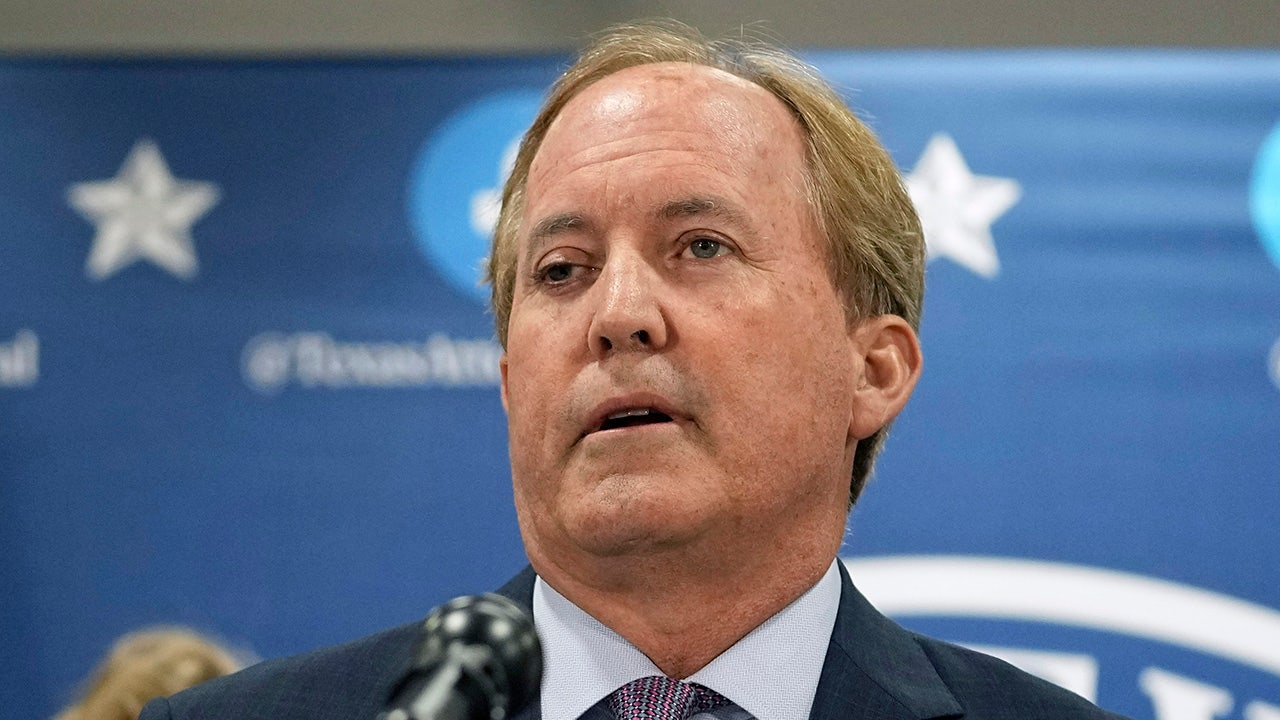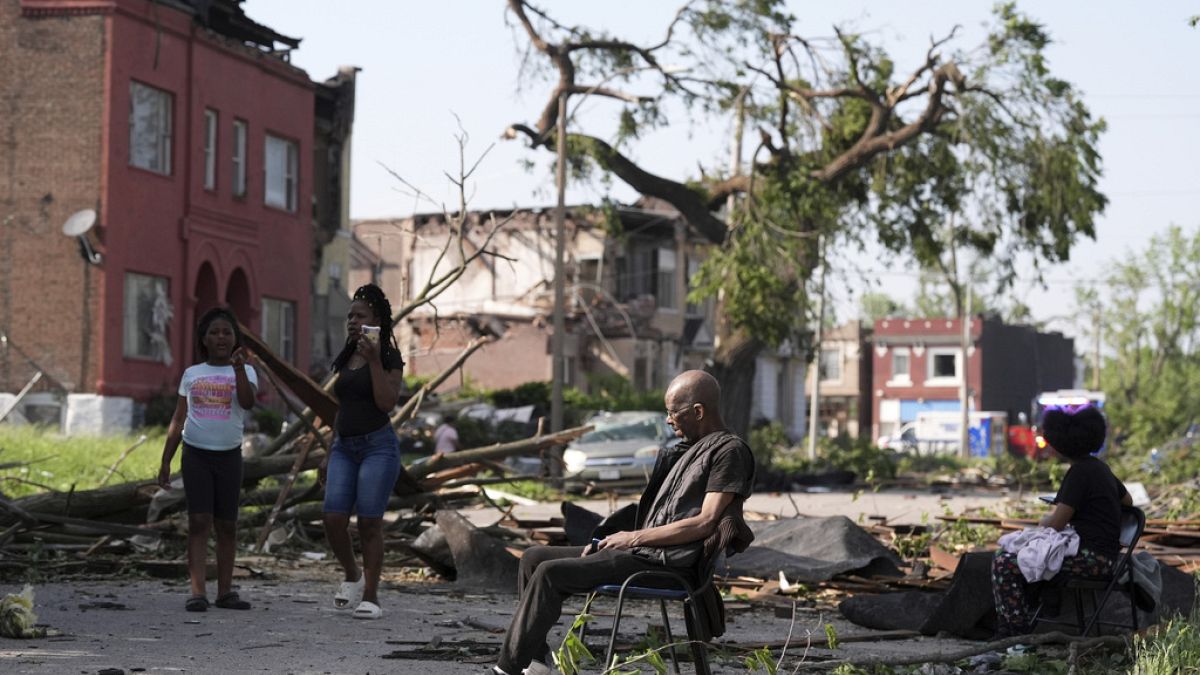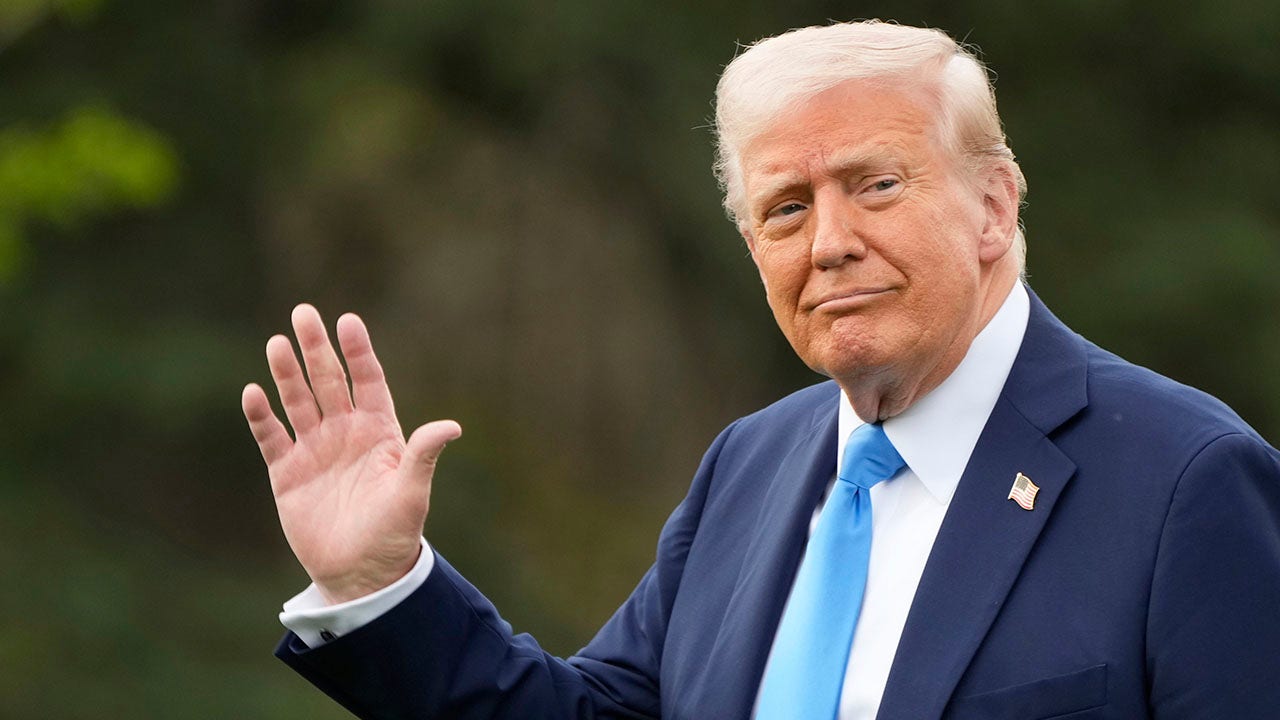Business
Ynon Kreiz: The CEO Mattel (and Hollywood) needed in the darkest hour
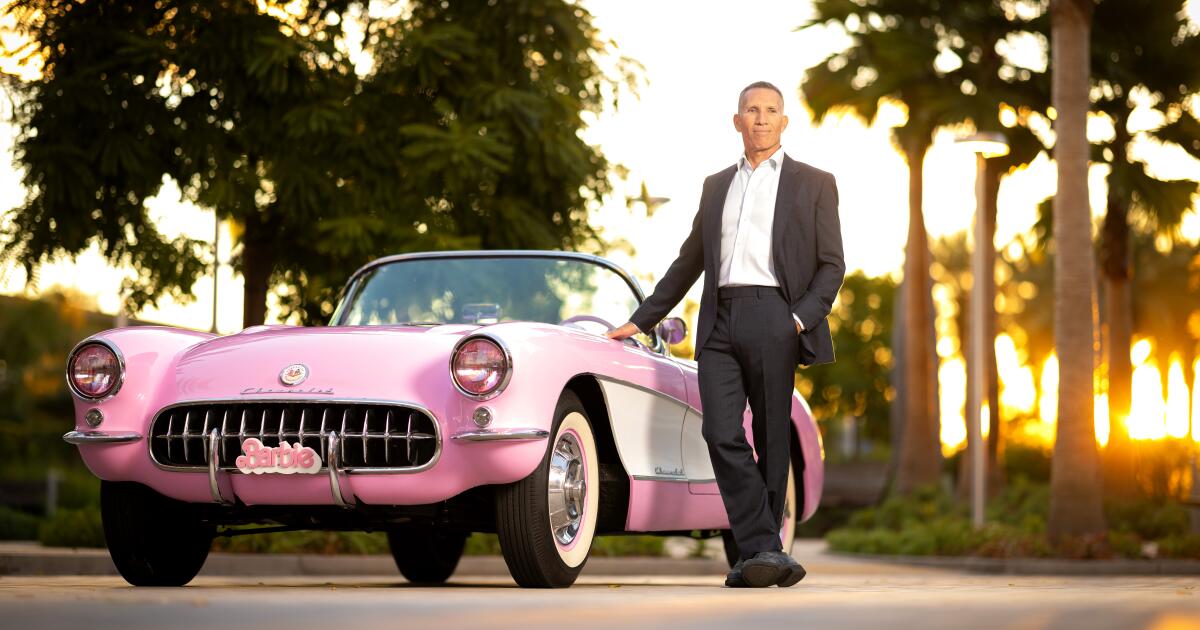
The day “Barbie” hit theaters in July, Mattel Chief Executive Ynon Kreiz was in New York City visiting his oldest daughter and the pair decided to walk to a nearby theater for some real-time market research. Kreiz, who had been the driving force behind the decision to bring Mattel’s iconic doll to life on the big screen, loved the film, but with its fate now in the hands of the ticket-buying public, his opinion didn’t much matter. He wanted to see how people were reacting.
His answer came quickly. As he and his daughter approached, they found themselves walking among droves of people dressed in Barbie’s signature pink. And when they poked their heads into each of the five packed theaters showing the movie, they were met with roars of laughter. Some viewers were crying.
Discover the changemakers who are shaping every cultural corner of Los Angeles. This week we bring you The Disruptors. They include Mattel’s miracle maker, a modern Babe Ruth, a vendor avenger and more. All are agitators looking to rewrite the rules of influence and governance. Come back each Sunday for another installment.
“Feeling that reaction — that audience reaction — was very telling,” he said, “and very exciting.”
What happened after opening night is now the stuff of Hollywood legend. The Greta Gerwig-directed film became an instant hit at the box office, raking in more than $1.4 billion, and kicked off a cultural phenomenon. Less well known, though, is the role the film has played in the story of Mattel’s revival. It’s a story that was written in large part by Kreiz, 59, who took the reins when the El Segundo-based company was struggling and who over his roughly six years at the helm has orchestrated a remarkable turnaround, making Mattel into one of the biggest corporate success stories of recent years.
At the heart of his plan was a move that seemed obvious to him, but which previous leaders failed to execute: Mattel needed to make a splash in the film business. To Kreiz, Mattel’s intellectual property was a gold mine. The company had a roster of instantly recognizable characters beloved by children and adults alike that he was confident could become enormously lucrative if they were exploited wisely.
For skeptics, that remains a big if. Mattel, in need of a big win in a dark hour, understandably chose to come out of the gate with its most reliable brand. The question now is whether Barbie’s success earned the toy maker’s film division enough industry respect, and breathing room, for the studio to re-create last summer’s magic with other, less potent brands, such as Hot Wheels, Polly Pocket and the card game Uno. Complicating the already uncertain road ahead, earlier this year an activist investor began agitating for the company to jettison some of its key brands to boost its middling stock price.
“This is not a novel concept where you take a strong brand in one vertical and import it to others,” Kreiz said at a conference last fall. “At Mattel, we haven’t done it. … You have ‘Fast and Furious,’ 10, and Hot Wheels, zero.” He believes with certainty that there’s an audience for such a film. After all, Mattel already sells nearly 800 million of the die-cast cars a year.

Mattel’s consumers, Ynon Kreiz said, are more than just consumers — they are fans.
Kreiz, who gets up around 4:30 or 5 a.m. to kiteboard or get some other workout in before work, brings a similar intensity to the office. He stays impressively on message when talking about Mattel, with seemingly effortless sound bites ready at hand, barely breaking eye contact. Watch clips of his public speaking appearances and it becomes clear he repeats talking points, often word for word, his calm, personable demeanor disguising the discipline with which he approaches the CEO role.
When asked about the key to Mattel’s transformation under his leadership, Kreiz, unhurried and with animated hands, launched into a theory that he has often recounted in interviews. Mattel’s consumers, he said, are more than just consumers — they are fans.
“And when you have a lot of fans, you have an audience,” he said.
Kreiz became Mattel’s fourth chief executive in four years when he took charge, inheriting a company that needed a lifeline. He brought with him extensive experience in the entertainment industry, having made career stops at Fox Kids Europe, Endemol Group — the production company known for its unscripted programs, including “Deal or No Deal” and “Big Brother” — and Maker Studios, a short-form video studio that Disney acquired in 2014.
The once dominant toy maker had lost its way: Some of Mattel’s biggest brands were struggling, and toy sales had been steadily declining since 2013. Its market cap had dipped more than $5 billion below that of rival Hasbro. Its second-largest customer, Toys R Us, filed for bankruptcy protection in 2017. That same year, Mattel reported a fourth-quarter loss of $281.3 million.
Kreiz needed to stop the bleeding. He restructured the company’s supply chain, reduced the number of items it produces by 35%, and cut five factories from its manufacturing lineup. The company slashed more than 2,200 jobs, 22% of its global nonmanufacturing workforce. Mattel was starting to move away from manufacturing and focus on developing its intellectual property, Kreiz told reporters. Between 2018 and 2021, Mattel said it achieved cost savings of more than a billion dollars.
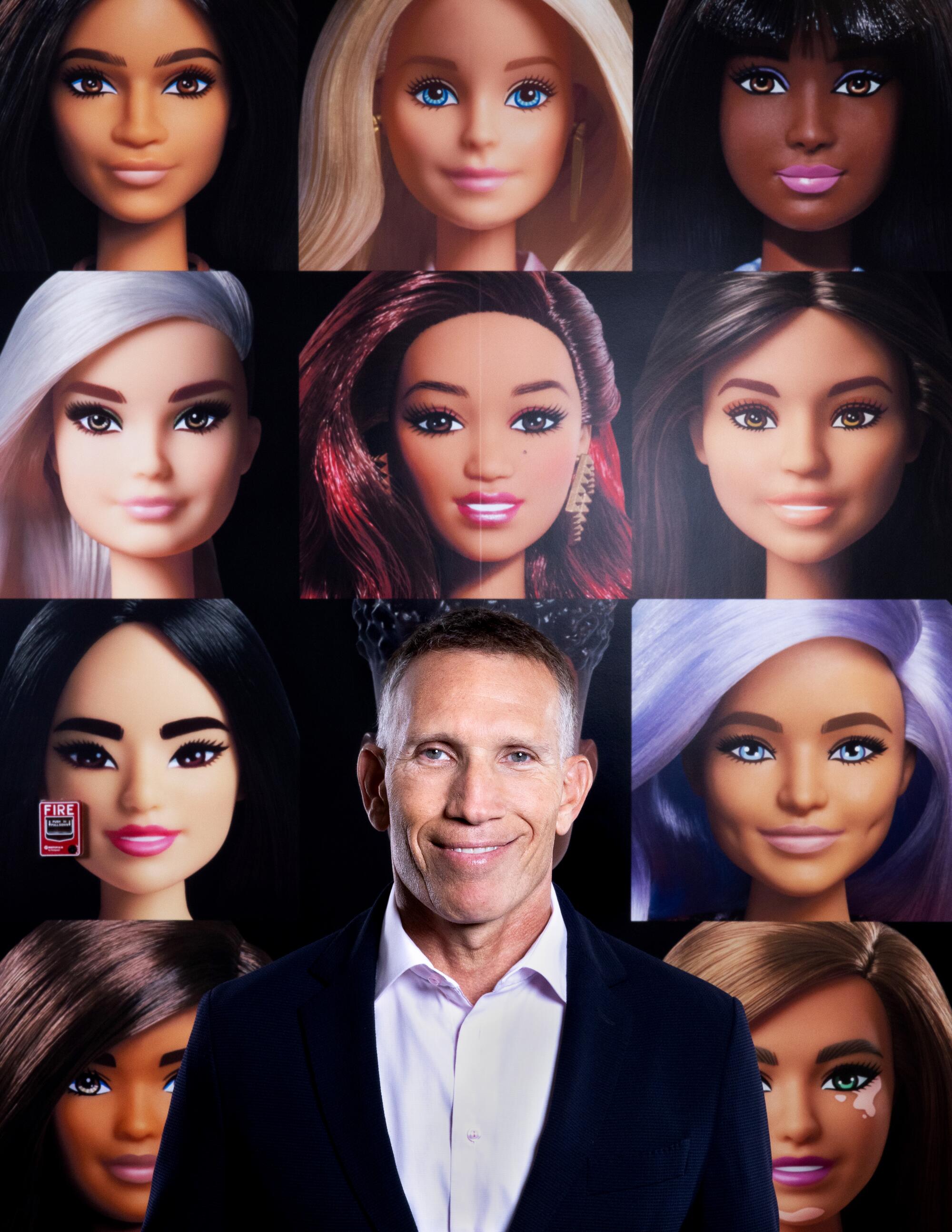
The Mattel of today looks much different from the company five years ago. The toy maker is now outpacing Hasbro and dominating in fast-growing toy categories, such as fashion dolls, which are more popular than action figures at the moment, said Linda Bolton Weiser, a managing director and senior research analyst at D.A. Davidson who tracks consumer goods.
Kreiz’s work at Mattel hasn’t gone unnoticed. With Barbie’s wild success, he and the turnaround he’d orchestrated became the talk of corporate Hollywood. Matt Belloni, an industry prognosticator, recently anointed Kreiz “the Hollywood hero of the year” and said he was an obvious choice to replace Bob Iger at Disney.

When the first draft of the “Barbie” script landed in Kreiz’s inbox, he read it twice back to back. The text felt unconventional and special, and he loved it right away. Kreiz isn’t shy with his praise of Gerwig, often calling her a “creative genius.”
Robbie Brenner, the head of Mattel Films, felt the same.
Kreiz ‘is going to be able to go out there and get the best partners in Hollywood to do these future projects.’
— Linda Bolton Weiser, a managing director and senior research analyst at D.A. Davidson
Brenner, a producer who was nominated for an Academy Award for “Dallas Buyers Club,” was one of Kreiz’s first hires after starting as CEO. The two met at the Polo Lounge at the Beverly Hills Hotel after an agent suggested they connect.
“I mean, we hired Greta Gerwig for a reason, and you don’t hire Greta Gerwig and then try to cut her legs off,” Brenner added. “I think that we wanted her to fly and to tell an authentic, amazing personal story that was unique and different and bold, and surprise people.”
The film was a hit beyond expectations, both financially and in the cultural consciousness. The “Barbenheimer” opening weekend brought crowds of people back into movie theaters in numbers unheard of since the pandemic. More than a dozen fashion brands launched “Barbie” collaborations, including Zara and Vans. Burger King in Brazil sold a hamburger doused in pink sauce and French fries called “Ken’s potatoes.” “Barbiecore” was everywhere.
The movie became the highest-grossing film of 2023, surpassing $1 billion at the global box office just 17 days after its release. At a conference in September, Anthony DiSilvestro, Mattel’s chief financial officer, said that the company expected $125 million in revenue related to the “Barbie” movie — including toy sales — with a profit margin of about 60%.
Mattel declined to comment on how much its cut of the box office revenue is, but industry analysts have said the company’s take-home pay from ticket sales is in the tens of millions. In addition, insiders with knowledge of the financial arrangement said that Mattel also will receive payments for owning the rights to Barbie’s intellectual property in addition to profits as a producer of the movie, the New York Times reported.
The toy aisle also felt the effects of “Barbie” mania. Mattel’s third-quarter performance beat estimates, with sales of Barbie dolls jumping 16%. The doll category as a whole was up 27% from the previous year.
The longer-term dividends the film will pay are harder to quantify but crucial to Mattel’s future.
“Barbie” has laid the groundwork for the future of Mattel’s entertainment sector, Bolton Weiser said. “[Kreiz] is going to be able to go out there and get the best partners in Hollywood to do these future projects. And it’s all good, you know? Very low risk for Mattel. They don’t take any big capital risks doing these entertainment events. So it all makes sense.”
Mattel Films now has 16 projects in development: A J.J. Abrams-produced Hot Wheels movie, Lily Collins and Lena Dunham signed on for Polly Pocket, and Vin Diesel as a partner for Rock ’Em Sock ’Em Robots, among others.
As the scale of “Barbie’s” success became clear, a question began to circulate: Can Mattel repeat this success story? Hollywood is a fickle beast, and the company’s use of its most resonant brand for its first act was a gamble.
“It’s difficult to imagine any other movie based on a toy ever reaching ‘Barbie’s’ heights,” Eliana Dockterman, who reviews TV and films for Time magazine, wrote in August. “Barbie is an icon. She has name recognition across the world equal to Mickey Mouse and Coca-Cola. And, sure, Hot Wheels may be popular, but won’t a Hot Wheels movie just be a racing movie, even if J.J. Abrams is at the helm as executive producer?”
Still, Dockterman admitted that she’s curious about Mattel’s next entertainment ventures, namely “Daniel Kaluuya’s involvement with what sounds like a very meta Barney movie (as in, yes, the big purple dinosaur); whether Lena Dunham can find a quirky take on Polly Pocket; and if a Magic 8 Ball horror movie can actually prove to be scary.”
Kreiz quickly brushed off concerns of “Barbie” as a one-hit wonder. “We’re not saying that every movie will be as successful as ‘Barbie,’” he said, “but we absolutely look to have the same approach in terms of attracting and collaborating with the talent, supporting and backing the talent,” and enticing Mattel’s built-in fan base to the theater.
“The idea is to create something unique in every movie,” he added. “Every project has a unique purpose, and will have a unique voice.”

While “Barbie” captured fans’ collective imagination last year, Mattel’s future is not tied exclusively to films. Company execs like to joke that the nearly 800 million Hot Wheels sold annually make Mattel the biggest auto manufacturer in the world.
In September, the company unveiled a two-story L.A. flagship store for American Girl at the Westfield Century City Mall. On opening day, a line of toddlers to tweens, with dolls clutched to their chests and their parents in tow, lined up in front of the store’s doors. Inside, the cafe serves doll-sized pancakes on tiered serving trays alongside plates of human-sized ones. A hair and nail salon styles dolls and their humans.
But Kreiz’s big bet on entertainment is never far off. Mattel announced in December plans to give the American Girl brand its own Hollywood treatment with a live-action movie directed by Lindsey Anderson Beer. Some of the American Girls have already starred in movies, mostly direct-to-DVD and made-for-TV films, but the company is aiming to go bigger.
Nostalgia, tapped effectively, can be a powerful force at the box office. There is a reason why studios keep reaching for reboots and reimaginings of beloved franchises — fans want to reconnect with characters with whom they have a history. But it can be a tricky business trying to nail the sweet spot of familiarity and freshness.
Kreiz thinks the company is up to the task.
“Play is our language,” he said. “This is how we start the journey. This is how we speak to our fans.”

Business
Cable giant Charter to buy Cox in a $34.5-billion deal, uniting providers that serve SoCal

Charter Communications and Cox Communications plan to merge in a $34.5-billion deal that would unite Southern California’s two major cable TV and internet providers to sell services under the Spectrum brand.
The proposed consolidation, announced Friday, comes as the industry grapples with accelerating cable customer losses amid the shift to streaming.
The companies could face even more cord-cutting after their long-time programming partner, Walt Disney Co., begins offering its ESPN sports channel directly to fans in a stand-alone streaming service debuting this fall.
If approved by Charter shareholders and regulators, the merger would end one of the longest TV sports blackouts.
Cox customers in Rancho Palos Verdes, Rolling Hills Estates and Orange County would finally have the Dodgers’ TV channel available in their lineups. For more than a decade, Cox has refused to carry SportsNet LA because of its high cost.
Charter distributes the Dodgers channel as part of a $8.35-billion television contract signed with the team’s owners in 2013. Charter has bled hundreds of millions of dollars on that arrangement and now offers the channel more widely via a streaming app.
The Atlanta-based Cox is the nation’s third-largest cable company with more than 6.5 million digital cable, internet, telephone and home security customers. Stamford, Conn.-based Charter has more than 32 million customers.
Charter dramatically expanded its Los Angeles presence in 2016 by acquiring Time Warner Cable for more than $60 billion.
The Charter-Cox combination would have 38 million customer homes in the country — a larger footprint than longtime cable leader, Philadelphia’s Comcast Corp.
“This transformational transaction will create an industry leader in mobile and broadband communication services and seamless video entertainment,” Charter Chief Executive Christopher Winfrey said in a conference call with analysts.
Winfrey would become the proposed entity’s CEO.
A major motivation for the deal was to be able to combine operations in Los Angeles, Orange and San Diego counties where both services currently operate and add attractive markets like Phoenix, Winfrey told analysts.
“Our network will span approximately 46 states passing nearly 70 million homes and businesses,” Winfrey said.
Cox is privately held. The billionaire Cox family, descendants of an Ohio press baron who bought his first newspaper in 1898, began acquiring cable systems in 1962 and has since held them with a tight grip. The Cox cable assets were long seen as a lucrative target.
Last year, Cox generated $13.1 billion in revenue and $5.4 billion in adjusted earnings before interest, taxes, depreciation and amortization.
“Cox was always the first name that would come up in consolidation conversations… and it was always the first name dismissed,” longtime cable analyst Craig Moffett wrote in a Friday research note. “Cox wasn’t for sale.”
Until it was.
In an unexpected twist, the name of the merged company would be changed to Cox within a year of the deal closing. However, its products would carry the Spectrum moniker.
The Cox family would be the largest shareholder, owning about 23% of the combined entity’s outstanding shares.
Charter shares got a slight bump on Friday’s news, climbing nearly 2% to $427.25.
“Cable is a scale business. [The] added size should help Charter compete better with the larger telcos, tech companies and [Elon Musk’s] Starlink,” said Chris Marangi, co-chief investment officer of value at the New York-based Gabelli Funds, a large media investor.
Adding the Cox homes will allow Charter to expand distribution for its El Segundo-based Spectrum News channel.
Charter said it would absorb Cox’s commercial fiber, information technology and cloud businesses. Cox Enterprises agreed to contribute the residential cable business to Charter Holdings.
Cox Enterprises would be paid $4 billion in cash and receive about $6 billion in convertible preferred units, which could eventually be exchanged into Charter shares. The Cox family would get about 33.6 million common units in the Charter Holdings partnership, worth nearly $12 billion.
The combined entity will absorb Cox’s $12 billion in outstanding debt.
Charter’s ability to navigate the challenged landscape was a factor in the family’s decision, said Cox Enterprises Chief Executive Alex Taylor, a great-grandson of the company’s founder, told analysts.
“Charter has really impressed us above all others with the way they have spent capital,” Taylor said. “In the last five years, they’ve spent over $50 billion investing” in internet infrastructure and building a wireless phone service.
“This deal starts with mobile,” cable analyst Moffett wrote. “Cox is relatively late to the wireless game. But that only means that the opportunity in [the combined companies’] footprint is that much larger.”
The companies said they could wring about $500 million a year in annual cost savings.
The combined company would have about $111 billion of debt.
Cox would have two directors on the 13-member board, including Taylor, who would serve as chairman.
Advance/Newhouse would keep its two board members. Advance/Newhouse would hold about 10% of the new company’s shares.
The transaction is expected to close at the same time as Charter’s merger with Liberty Broadband, which was approved by Charter and John Malone’s Liberty Broadband stockholders in February.
After the consolidation, Liberty Broadband will no longer be a direct Charter shareholder.
The Associated Press contributed to this report.
Business
Video: How Staffing Shortages Have Plagued Newark Airport

What’s causing major flight delays and disruptions at Newark Liberty International Airport? Niraj Chokshi, a reporter at The New York Times covering transportation, explains how a staffing shortage has contributed to the chaos and what’s being done to address it.
Business
L.A. council members were told a vote could violate public meeting law. They voted anyway
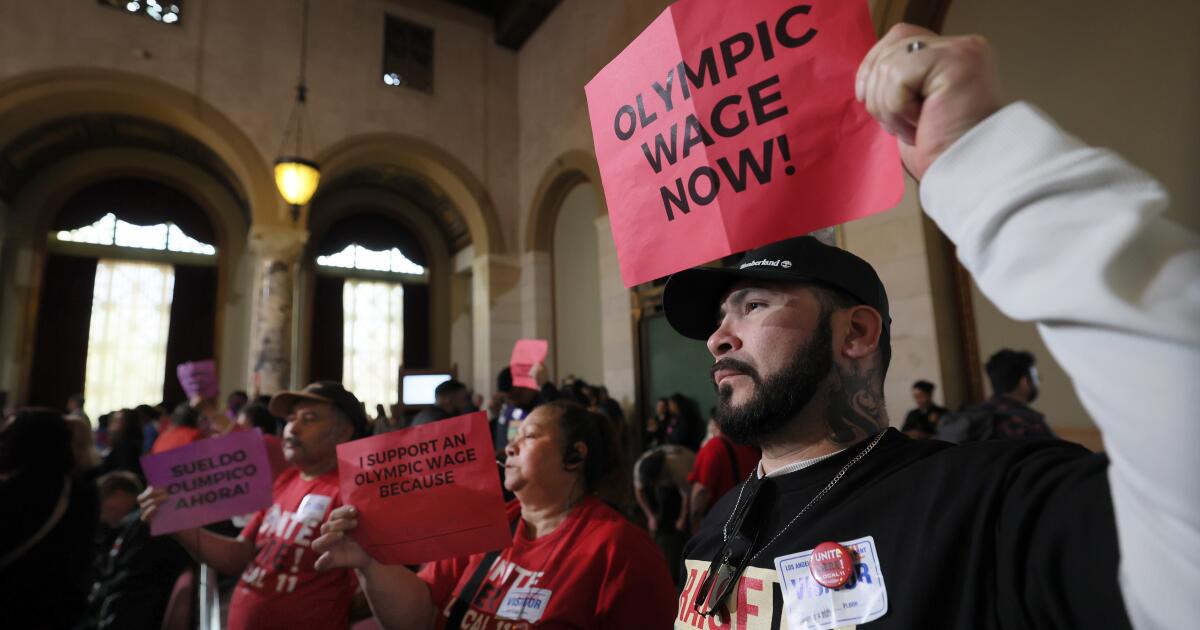
When Los Angeles City Council members took up a plan to hike the wages of tourism workers this week, they received some carefully worded advice from city lawyers: Don’t vote on this yet.
Senior Assistant City Atty. Michael J. Dundas advised them on Wednesday — deep into their meeting — that his office had not yet conducted a final legal review of the flurry of last-minute changes they requested earlier in the day.
Dundas recommended that the council delay its vote for two days to comply with the Ralph M. Brown Act, the state’s open meeting law.
“We advise that the posted agenda for today’s meeting provides insufficient notice under the Brown Act for first consideration and adoption of an ordinance to increase the wages and health benefits for hotel and airport workers,” Dundas wrote.
The council pressed ahead anyway, voting 12-3 to increase the minimum wage of those workers to $30 per hour by 2028, despite objections from business groups, hotel owners and airport businesses.
Then, on Friday, the council conducted a do-over vote, taking up the rewritten wage measure at a special noon meeting — one called only the day before. The result was the same, with the measure passing again, 12-3.
Some in the hotel industry questioned why Council President Marqueece Harris-Dawson, who runs the meetings, insisted on moving forward Wednesday, even after the lawyers’ warning.
Jackie Filla, president and chief executive of the Hotel Assn. of Los Angeles, said the decision to proceed Wednesday gave a political boost to Unite Here Local 11, which represents hotel workers. The union had already scheduled an election for Thursday for its members to vote on whether to increase their dues.
By approving the $30 per hour minimum wage on Wednesday, the council gave the union a potent selling point for the proposed dues increase, Filla said.
“It looks like it was in Unite Here’s financial interest to have that timing,” she said.
Councilmember Monica Rodriguez, who opposed the wage increases, was more blunt.
“It was clear that Marqueece intended to be as helpful as possible” to Unite Here Local 11, “even if it meant violating the Brown Act,” she said.
Harris-Dawson spokesperson Rhonda Mitchell declined to say why her boss pushed for a wage vote on Wednesday after receiving the legal advice about the Brown Act. That law requires local governments to take additional public comment if a legislative proposal has changed substantially during a meeting.
Mitchell, in a text message, said Harris-Dawson scheduled the new wage vote for Friday because of a mistake by city lawyers.
“The item was re-agendized because of a clerical error on the City Attorney’s part — and this is the correction,” she said.
Mitchell did not provide details on the error. However, the wording on the two meeting agendas is indeed different.
Wednesday’s agenda called for the council to ask city lawyers to “prepare and present” amendments to the wage laws. Friday’s agenda called for the council to “present and adopt” the proposed changes.
Maria Hernandez, a spokesperson for Unite Here Local 11, said in an email that her union does not control the City Council’s schedule. The union’s vote on higher dues involved not just its L.A. members but also thousands of workers in Orange County and Arizona, Hernandez said.
“The timing of LA City Council votes is not up to us (sadly!) — in fact we were expecting a vote more than a year ago — nor would the precise timing be salient to our members,” she said.
Hernandez said Unite Here Local 11 members voted “overwhelmingly” on Thursday to increase their dues, allowing the union to double the size of its strike fund and pay for “an army of organizers” for the next round of labor talks. She did not disclose the size of the dues increase.
Dundas’ memo, written on behalf of City Atty. Hydee Feldstein Soto, was submitted late in Wednesday’s deliberations, after council members requested a number of changes to the minimum wage ordinance. At one point, they took a recess so their lawyers could work on the changes.
By the time the lawyers emerged with the new language, Dundas’ memo was pinned to the public bulletin board in the council chamber, where spectators quickly snapped screenshots.
-

 Austin, TX1 week ago
Austin, TX1 week agoBest Austin Salads – 15 Food Places For Good Greens!
-

 Technology1 week ago
Technology1 week agoNetflix is removing Black Mirror: Bandersnatch
-

 World1 week ago
World1 week agoThe Take: Can India and Pakistan avoid a fourth war over Kashmir?
-

 News1 week ago
News1 week agoReincarnated by A.I., Arizona Man Forgives His Killer at Sentencing
-

 News1 week ago
News1 week agoWho is the new Pope Leo XIV and what are his views?
-
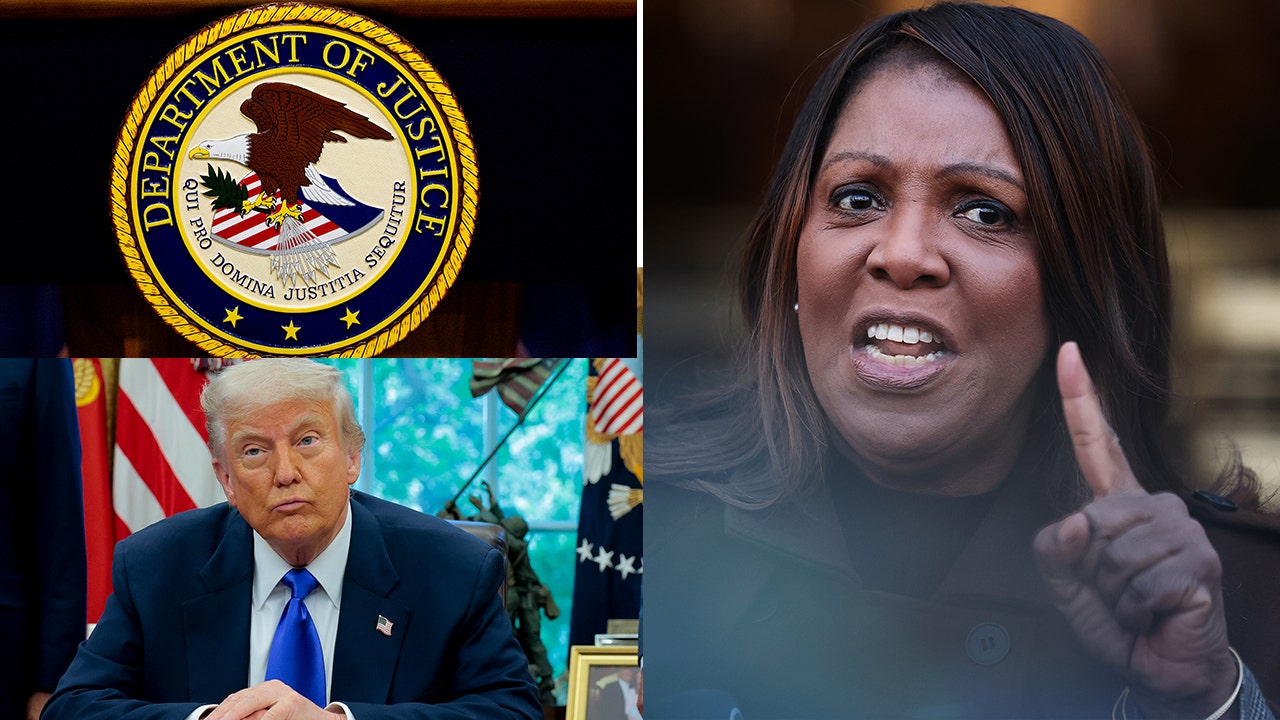
 Politics1 week ago
Politics1 week agoDepartment of Justice opens criminal investigation into NY AG Letitia James
-
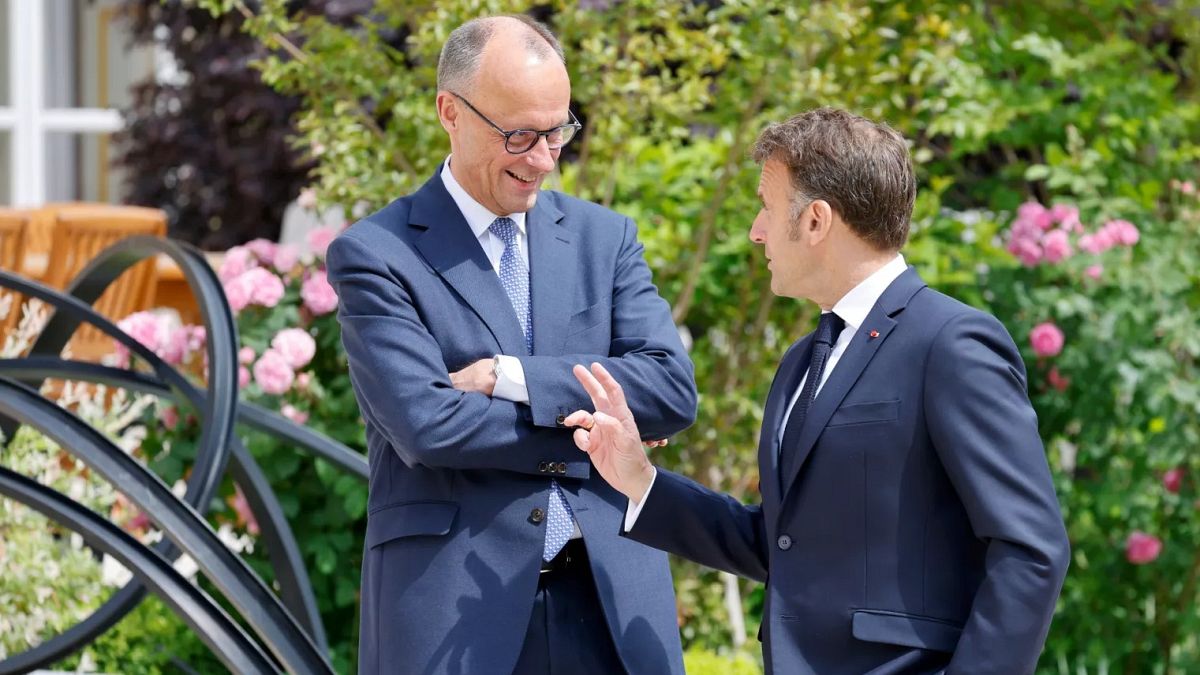
 World1 week ago
World1 week agoNew German chancellor aims for stronger EU ties with France and Poland
-

 News1 week ago
News1 week agoJudge Orders Release of Rumeysa Ozturk, Tufts Student Detained by ICE












